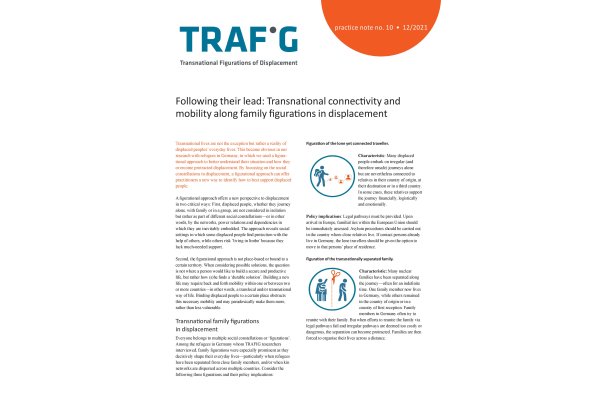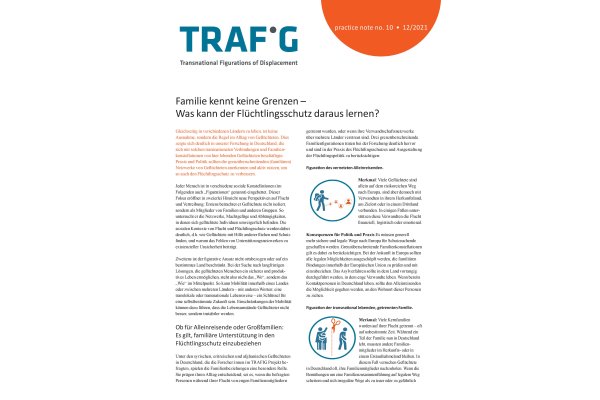TRAFIG practice note no. 10
Following their lead
Transnational connectivity and mobility along family figurations in displacement
Available in English and German
Transnational lives are not the exception but rather a reality of displaced peoples’ everyday lives. This became obvious in the TRAFIG research with refugees in Germany, which was based on a figurational approach to better understand their situation and how they overcome protracted displacement. By focussing on the social constellations in displacement, a figurational approach can offer practitioners a new way to identify how to best support displaced people.
Everyone belongs to multiple social constellations or ‘figurations’. In the TRAFIG research in Germany, which is presented in TRAFIG working paper no. 10, family figurations of displaced persons were of particular importance, as decisively shape their everyday lives—particularly when refugees have been separated from close family members, and/or when kin networks are dispersed across multiple countries.
This corresponding practice note illustrates the characteristics and policy implications of three transnational family figurations:
![]() the the lone yet connected traveller
the the lone yet connected traveller
![]() the transnationally separated family
the transnationally separated family
![]() the transnationally extended family
the transnationally extended family
and shows how " following their lead" can help to support displaced persons.
Authors: Simone Christ, Elvan Isikozlu, Benjamin Etzold
You can download TRAFIG practice note no. 10 in:
Cite as: Christ, S. et al. (2021). Following their lead: Transnational connectivity and mobility along family figurations in displacement (TRAFIG practice note 10). Bonn: BICC. DOI: 10.5281/zenodo.5845868
Cite as: Christ, S. et al. (2021). Familie kennt keine Grenzen – Was kann der Flüchtlingsschutz daraus lernen? (TRAFIG practice note 10). Bonn: BICC. DOI: 10.5281/zenodo.6011129
This practice note is based on: Christ, S. et al. (2021). Figurations of Displacement in and beyond Germany. Empirical findings and reflections on mobility and translocal connections of refugees living in Germany (TRAFIG working paper no. 10). Bonn: BICC. DOI: 10.5281/zenodo.5841892.

